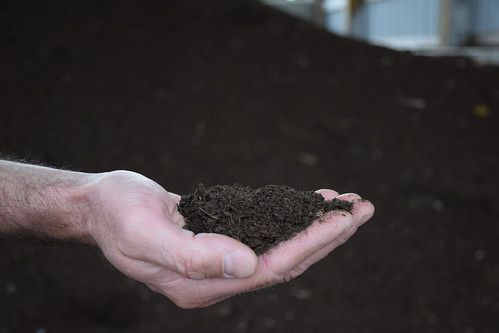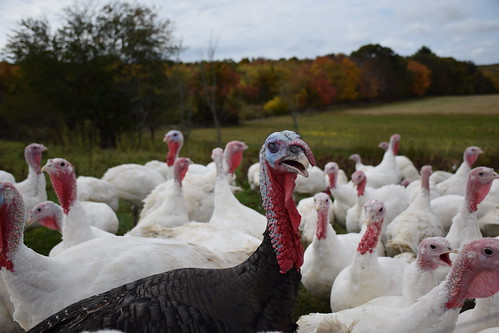
After composting, the leftover animal materials and waste are no longer recognizable. Instead, they become healthy, organic fertilizer. NRCS photo courtesy Analia Bertucci.
You can picture it now, can’t you? The familiar sounds of a parade or football game playing on the TV while little ones chase each other through the house. More friends and family members than you can ever remember in one place at the same time. And the aroma … those delightful smells that let you know it’s a holiday.
You see the table surrounded by mismatched chairs, dinnerware and cutlery. And on that table, neatly decorated with the rich colors of the season, sit bowls filled with traditional fare and in the center of it all, the pièce de résistance – the golden brown bird around which the entire meal is built. Turkey. The year’s most prestigious meal!
Chances are, as you sit down to that mouthwatering Thanksgiving dinner, the last thing on your mind is a compost facility, or prescribed grazing, or any other conservation practice. In fact, unless you’re either a farmer or employed by USDA, you’ve probably never even heard of them. But these conservation practices all have a lot to do with the food products you consume.
USDA’s Natural Resources Conservation Service (NRCS) works with farmers and ranchers all across the country to keep the nation’s soil, water, animals, plants and air healthy, in turn, helping keep all of us healthy.
How does it work? Let’s use the example of Ekonk Turkey Farm, in Moosup – Connecticut’s largest pasture-raised turkey producer. Each year, this family-run business produces 3,000 turkeys and more than 2,000 chickens, along with geese and capons.
Farm owners Rick and Elena Hermonot have been working with NRCS since 2010. Through the Environmental Quality Incentives Program, they have been able to implement a nutrient management plan, and install an efficient composting system that allows them to combine all the leftover animal materials and waste and have it break down naturally, leaving them with clean, healthy compost that they use to fertilize their fields.
This type of system also ensures that waste doesn’t get washed off the fields into groundwater or local waterways, keeping your water clean.
The Hermonot’s have also worked with NRCS to implement a prescribed grazing system that allows the fowl to roam free and eat a healthy diet from the pasture.
So whether you’re a vegetarian or a carnivore, you benefit because the programs that NRCS offers and that producer’s voluntarily implement help to keep our food supply safe and healthy, and that is something for which to give thanks!

Turkeys at the Ekonk Turkey Farm, in Moosup, Connecticut, roam free. The family-run business annually produces 3,000 turkeys. NRCS photo courtesy Analia Bertucci.
No comments:
Post a Comment
Note: Only a member of this blog may post a comment.